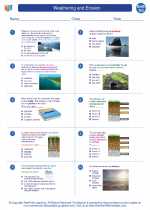Natural Hazards
Natural hazards are events or processes in the natural environment that pose a threat to human life, property, and infrastructure. These hazards can be categorized into several types, including geological, meteorological, hydrological, and biological hazards.
Types of Natural Hazards
1. Geological Hazards: These include events such as earthquakes, volcanic eruptions, tsunamis, and landslides.
2. Meteorological Hazards: These are associated with weather and climate, and include hurricanes, tornadoes, blizzards, and heatwaves.
3. Hydrological Hazards: These are related to water and include floods, droughts, and avalanches.
4. Biological Hazards: These hazards are associated with living organisms and include disease outbreaks, insect infestations, and animal attacks.
Causes of Natural Hazards
Natural hazards are caused by a combination of natural processes and human activities. Some of the primary causes include tectonic plate movement, climate change, deforestation, urbanization, and population growth.
Effects of Natural Hazards
Natural hazards can have devastating effects on human populations, including loss of life, destruction of infrastructure, displacement of communities, and economic setbacks. These hazards also have environmental impacts, such as soil erosion, habitat destruction, and pollution.
Preparation and Mitigation
It is essential for individuals, communities, and governments to prepare for and mitigate the effects of natural hazards. This can be achieved through measures such as early warning systems, land-use planning, building codes, emergency response plans, and public education.
Study Guide
When studying natural hazards, it is important to understand the different types of hazards, their causes, effects, and methods of preparation and mitigation. Additionally, it is helpful to explore specific examples of natural hazards, their impacts on society and the environment, and the role of scientific research and technology in monitoring and predicting these events.
Focus on understanding the underlying geological, meteorological, hydrological, and biological processes that contribute to natural hazards, as well as the interdisciplinary nature of studying and addressing these phenomena.
Finally, consider the ethical and social implications of natural hazards, including issues of equity, resilience, and sustainable development in the face of these challenges.
.◂Earth Science Worksheets and Study Guides High School. Weathering and Erosion

 Worksheet/Answer key
Worksheet/Answer key
 Worksheet/Answer key
Worksheet/Answer key
 Vocabulary/Answer key
Vocabulary/Answer key
 Vocabulary/Answer key
Vocabulary/Answer key
 Vocabulary/Answer key
Vocabulary/Answer key
